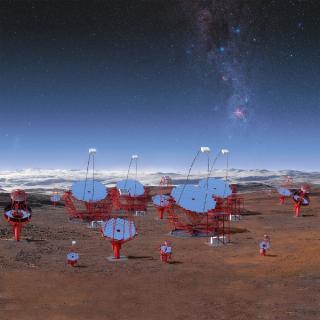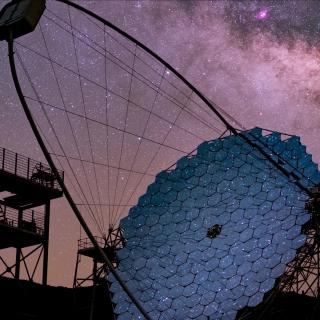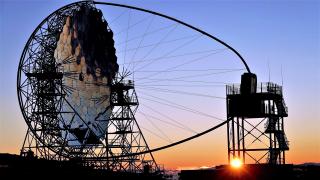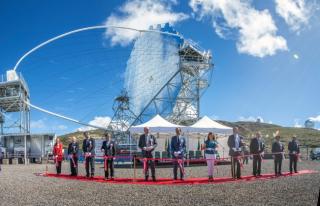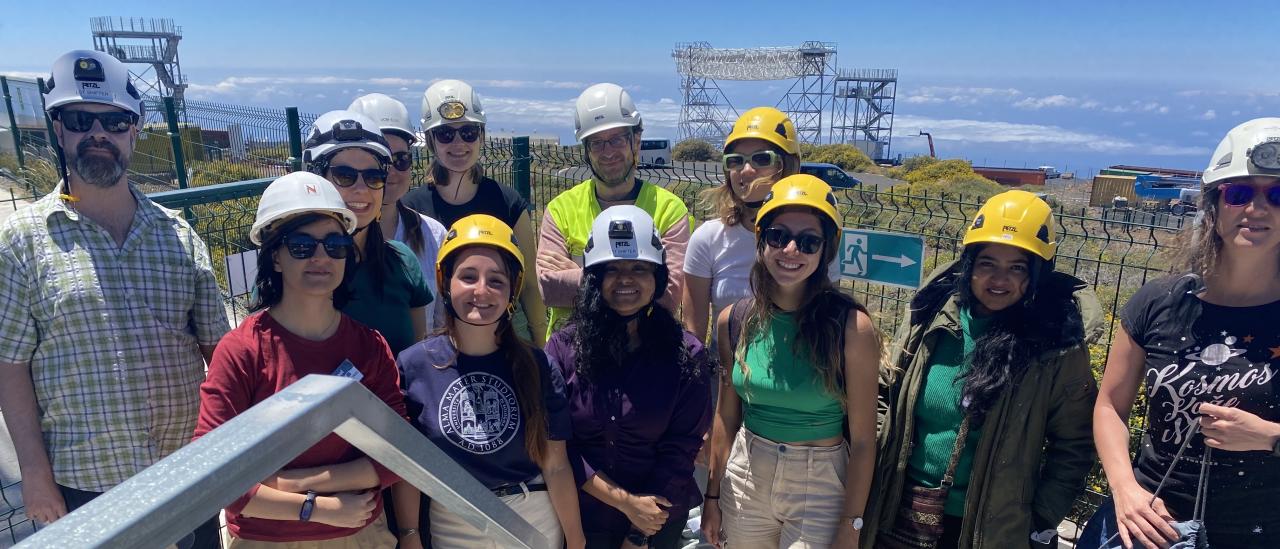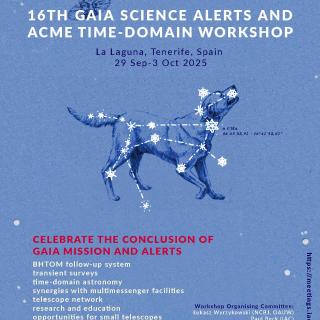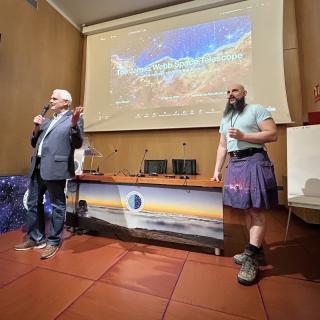The first CTAO School, which ended on 29 June, was a resounding success. The 27 PhD students travelled from 12 different countries for the two-week workshop that took them to Italy and Spain for a deep dive into CTAO science, technology and data analysis of CTAO, the largest and most powerful gamma-ray observatory in the world, which has its northern site at the Roque de los Muchachos Observatory (ORM) on La Palma.
The school kicked off in Bertinoro, Italy, with a masterclass in gamma-ray astrophysics that included hands-on sessions on how to prepare a science proposal for the prototype Large-Sized Telescope (LST), the LST-1, located at the ORM. For the second week, the students travelled to La Palma in the Canary Islands, which is the home of the CTAO-North site. To learn about the Cherenkov detection principles, the students were led by the instructors through the various steps of data analysis, from the event reconstruction to the production of the physical results that are needed for publications.
Then, the students made the trek from the classroom at sea level up to the site of the CTAO’s northern array at the Roque de los Muchachos Observatory (ORM) to experience the life of telescope operators. They learned about Cherenkov instruments and visited the LST prototype, the LST-1, to see the latest in Cherenkov technology up close. Additionally, the students visited the CTAO’s predecessor, MAGIC, at night and had a class in optical astronomy, with day and night visits to the Gran Telescopio Canarias (GTC o Grantecan) and the Telescopio Nazionale Galileo (TNG).
“Before I went to school, I didn't think I was really interested in the instrumental part of my work. But I was finally amazed by the telescopes and the incredible site of El Roque de los Muchachos, and it made me realise just how huge CTAO is, involving all the people who work there (researchers, engineers, technicians, science popularizers, etc.),” said Coline Dubos, second-year PhD student IJCLab.
To put their newfound knowledge and skills to work, the LST-1, MAGIC, GTC and TNG operators kindly shared some observation time with the students. “I had many valuable lectures and experiences from theoretical and observational perspectives, specifically, as an aspiring theorist, it was a great opportunity to visit and learn deeply about the LST-1 and the other ORM facilities. I will never forget the sight of the LST-1 against the backdrop of the Milky Way,” says Tatsuki Fujiwara, second-year graduate student, Osaka University.
Just as important, the students had time to bond and enjoy the beautiful island of La Palma. On their day off they rented cars and explored some of the incredible natural sites of the island.
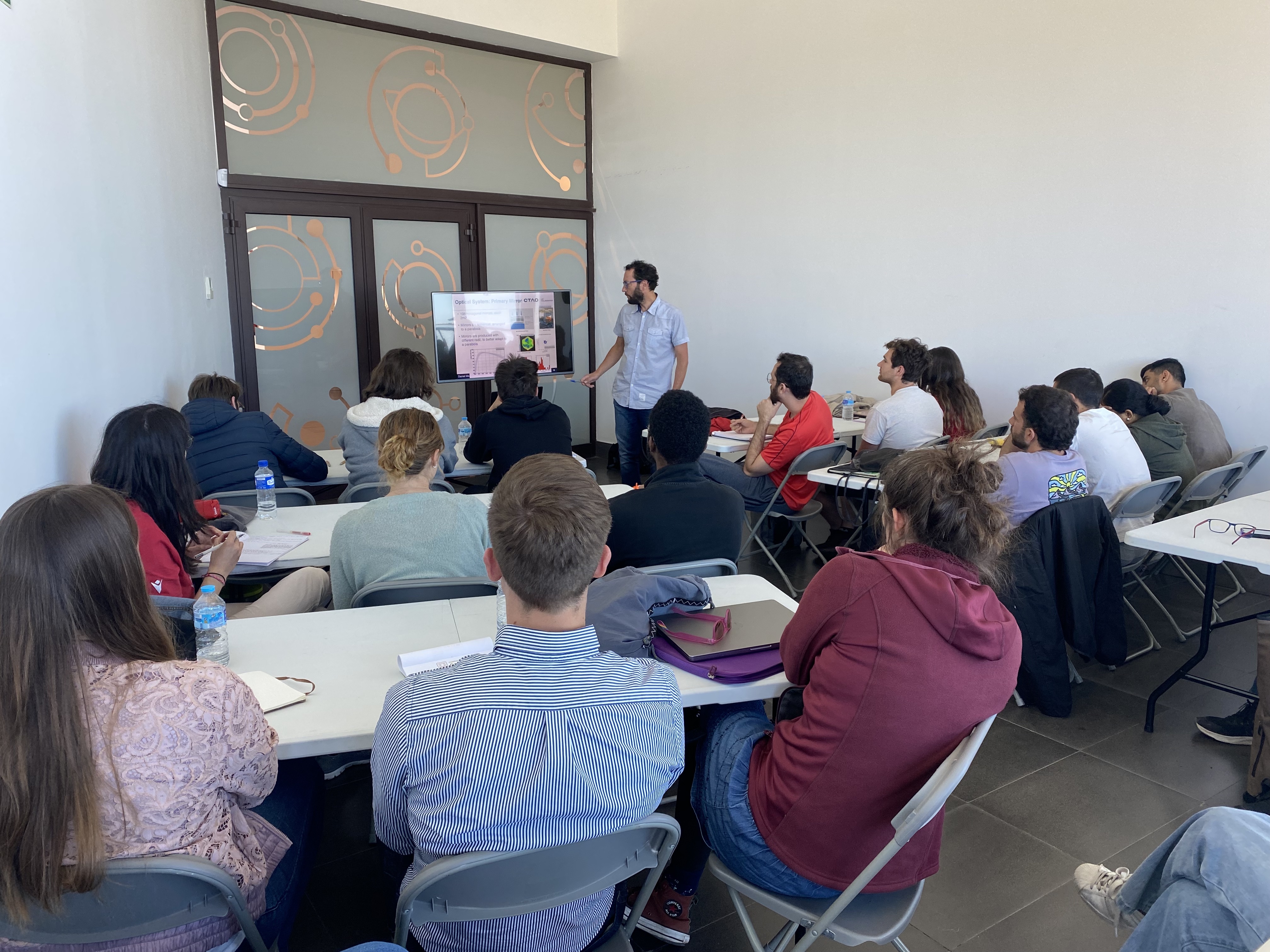
“The school answered every lingering question I had about research topics like gamma-ray production mechanisms or extensive air shower physics, as well as giving me the opportunity to examine the hardware on current state-of-the-art IACTs in person,” said Luca Riitano, a fourth year PhD student at University of Wisconsin-Madison. “All this complimented by the beautiful locations in which the school took place and the new connections made with the lecturers and students alike.”
It was inspiring to watch the next generation of astroparticle physicists explore the fundamentals and frontier of the field, present their innovative ideas and work together to enhance each other’s knowledge, all against the backdrop of two phenomenal locations: Bertinoro and La Palma. We can’t wait to do it again!”, says Roberta Zanin, CTAO’s Project Scientist and main organiser of the school.
"Nothing was better than watching their joy and awe as they experienced working at the ORM, where three more LSTs are under construction and they had the opportunity to operate the ‘crown jewel’ of the CTAO-North site, the LST-1" explains Juan Cortina, a researcher at IAC/CIEMAT and chair of LST Steering Committee.
“This is an exciting moment for everyone involved. Bringing students from around the world to learn about a field and project we are so passionate about has been both fulfilling and fun" claims Patricia Márquez, engineer at IFAE and Telescope Manager of LST-1.
The CTAO School was organized by the CTAO Central Organisation in cooperation with the CTAO LST Collaboration. The first week of the school in Bertinoro was funded by the Cherenkov Telescope Array Plus project (IR0000012; CUP C53C22000430006) within the Italian Resilience and Recovery Plan (PNRR), as an activity led by the University of Bologna and INAF, with contribution from INFN. The second week was supported by funds from the Spanish Ministry for Science and Innovation and the Japanese Institute for Cosmic Ray Research.
CTAO School Website
